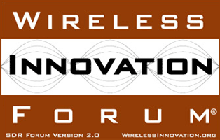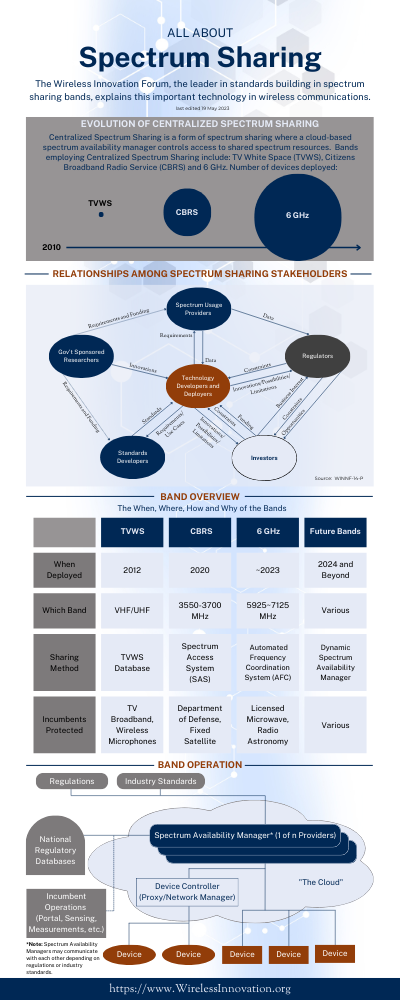- Home
- Knowledge Center
- Reports, Recommendations and Specifications
- Information Documents
- NEW! All About Spectrum Sharing Infographic
- Free Webinars
- Tech Talks
- Setting the Standard Video Blog
- NEW! Beyond the Radio Dial Video Blog
- Conference Proceedings
- Workshop Proceedings
- Springer Journals
- Market Studies
- What is the SCA?
- Issue Submissions
- Reference Implementations
- What is SDR?
- What are CR and DSA?
- About Us
- Events
- News
- Projects & Committees
- Members
- Join the Forum
|
The WInnForum is seeking your input in the 2nd edition of our widely downloaded Dynamic Spectrum Sharing Annual Report
Downloaded more than 2,600 times, this report was initially created in 2014 for regulators, policy makers, spectrum managers, network planners, and wireless researchers who need to understand the state of technologies such as dynamic spectrum access and their ability to facilitate spectrum sharing. It acts as a reference guide to clearly identify and synthesize a harmonized view of the results of spectrum sharing research and trials, identify what is in development, and articulate what issues are being addressed and what issues still need to be resolved. The Wireless Innovation Forum is in the process of producing a 2nd Edition. We are seeking input on topics including regulations, tests, trials and deployments, standards, equipment, and business models in the following bands:
If you haven't already, you can download the current report here.
More about the first edition of the ReportThis report acts as a reference guide to clearly identify and synthesize a harmonized view of the results of spectrum sharing research and trials, identify what is in development, and articulate what issues are being addressed and what issues still need to be resolved. In developing this report, the dependencies of business, regulation and technology in advancing dynamic spectrum sharing became obvious:
Download today! |




